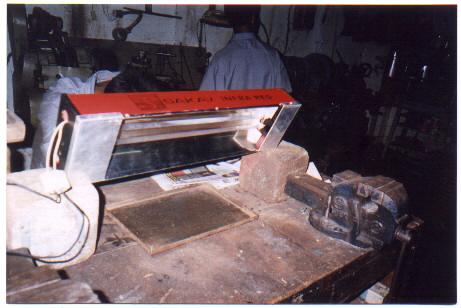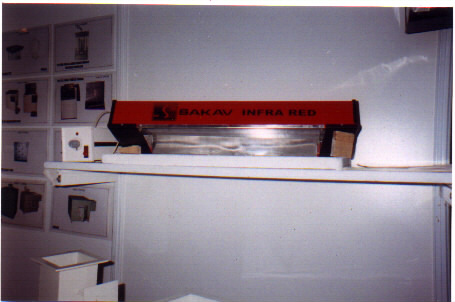
Bulletin

Auto Body |
Drying Photo Films |
Glue Drying |
Baking Varnishes |
Drying Sand Cores |
Greenware Drying |
Curing Resins |
Drying Wood Finishes |
Heating Moulds |
Curing Rubber |
Drying Textiles |
Printing & Lithography |
Curing Shell Molds |
Electrostatic Copying Equipment |
Silk Screen |
Drying Inks |
Food Processing |
Space Heaters |
Drying Lacquers, Paint |
Fruit Drying |
Spot Heating |
Drying Mirrors |
Fusing Plastics |
Thermal Diazo Equipment |
Drying Plastic Coatings |
|
Vulcanizing Rubber |
Through the years many different forms of infrared heat sources have been developed. Some of the more familiar forms seen today are metal sheathed tubular heaters, quartz tubes, quartz lamps, gas fire catalytic, flat face panels and ceramic heaters
Radiant Efficiency |
56% |
61% |
86% |
80% |
88% |
96% |
Physically Strength |
High |
Low |
Very Low |
High |
Medium |
Medium |
Heat-Up Cool Down |
Slow |
Fast |
Very Fast |
Very Slow |
Slow |
Slow |
Max. Temp. |
14000F |
16000F |
40000F |
8000F |
16000F |
12920F |
Colour Sensitivity |
Low |
Low |
High |
Low |
Low |
Low |
SPECIFICATION : |
||||||
Model No. |
Heated Length |
Element Length |
Oven Length |
Watts/Inch of Heated Length |
Watt |
Tube |
16 |
16" |
19" |
22" |
49 |
750 |
10-12 |
18 |
18" |
21" |
24" |
56 |
1000 |
10-12 |
24 |
24" |
27" |
30" |
42 |
1000 |
10-12 |
26 |
26" |
29" |
32" |
38 |
1000 |
10-12 |
30 |
30" |
33" |
36" |
34 |
1000 |
10-12 |
38 |
38" |
41" |
44" |
33 |
1250 |
10-12 |
41 |
41" |
44" |
47" |
30 |
1250 |
10-12 |
46 |
46" |
49" |
52" |
27 |
1250 |
10-12 |
47 |
46" |
49" |
52" |
33 |
1500 |
10-13 |
60 |
60" |
63" |
66" |
25 |
1500 |
10-13 |
50 |
50" |
53" |
56" |
30 |
1500 |
10-15 |
61 |
60" |
63" |
66" |
29 |
1750 |
10-15 |
41 |
41" |
44" |
47" |
73 |
3000 |
10-15 |